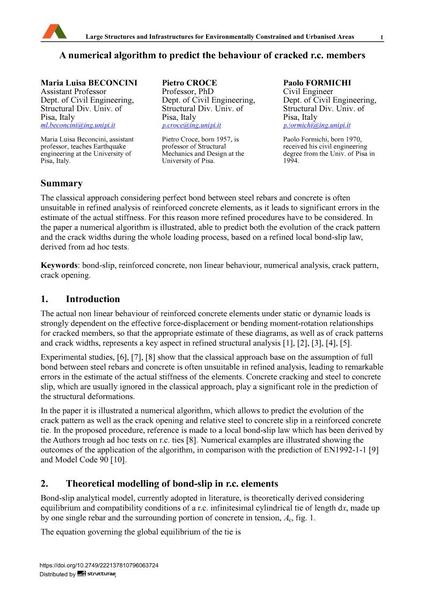A numerical algorithm to predict the behaviour of cracked r.c. members

|
|
|||||||||||
Bibliografische Angaben
| Autor(en): |
Maria Luisa Beconcini
Pietro Croce Paolo Formichi |
||||
|---|---|---|---|---|---|
| Medium: | Tagungsbeitrag | ||||
| Sprache(n): | Englisch | ||||
| Tagung: | IABSE Symposium: Large Structures and Infrastructures for Environmentally Constrained and Urbanised Areas, Venice, Italy, 22-24 September 2010 | ||||
| Veröffentlicht in: | IABSE Symposium Venice 2010 | ||||
|
|||||
| Seite(n): | 784-785 | ||||
| Anzahl der Seiten (im PDF): | 8 | ||||
| Jahr: | 2010 | ||||
| DOI: | 10.2749/222137810796063724 | ||||
| Abstrakt: |
The classical approach considering perfect bond between steel rebars and concrete is often unsuitable in refined analysis of reinforced concrete elements, as it leads to significant errors in the estimate of the actual stiffness. For this reason more refined procedures have to be considered. In the paper a numerical algorithm is illustrated, able to predict both the evolution of the crack pattern and the crack widths during the whole loading process, based on a refined local bond-slip law, derived from ad hoc tests. |
||||
| Stichwörter: |
Rissbild Stahlbeton numerische Analyse nichtlineares Verhalten
|
||||
